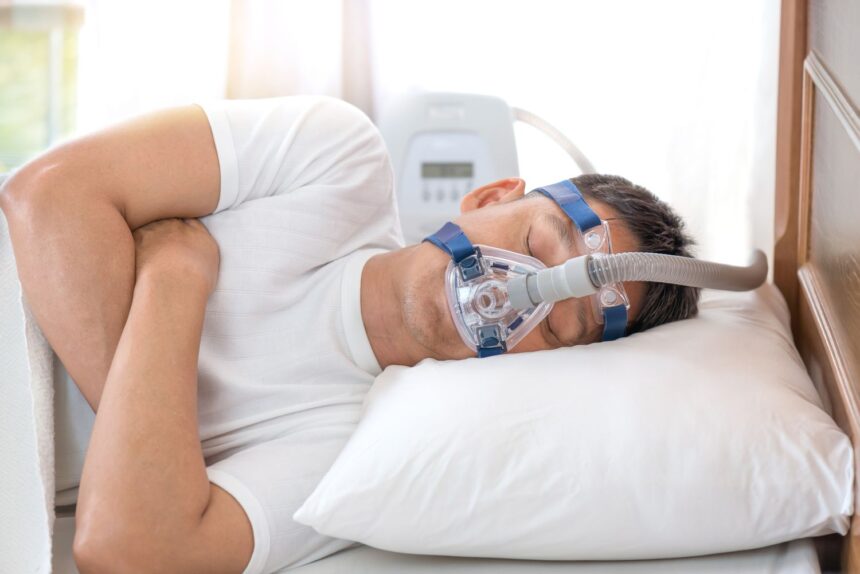Obstructive sleep apnoea (OSA) is a prevalent and severe sleep disorder characterized by repeated interruptions in breathing during sleep. These interruptions, known as apnoeas, can significantly impact a person’s health and quality of life. Understanding the diagnosis, treatment options, and associated costs, especially in the UK, is essential for managing this condition effectively.
What is Obstructive Sleep Apnoea?
Obstructive sleep apnoea occurs when the muscles at the back of the throat fail to keep the airway open despite breathing efforts. This leads to brief but repeated interruptions in breathing during sleep, which can last from a few seconds to a minute. Common symptoms include loud snoring, choking or gasping during sleep, excessive daytime sleepiness, and difficulty concentrating.
Obstructive Sleep Apnea Diagnosis
Diagnosing obstructive sleep apnoea typically involves a comprehensive evaluation, including medical history, physical examination, and specialized sleep studies.
1. Medical History and Physical Examination
The diagnosis process starts with a detailed discussion of symptoms and medical history. The doctor will ask about sleep patterns, snoring, daytime fatigue, and underlying health conditions. A physical examination may include checking for physical features contributing to OSA, such as obesity, a large neck circumference, or structural abnormalities in the airway.
2. Polysomnography (Sleep Study)
Polysomnography is the gold standard for diagnosing obstructive sleep apnoea. This overnight sleep study monitors physiological parameters, such as brain activity, eye movement, heart rate, blood oxygen levels, and breathing patterns. It provides a comprehensive view of sleep quality and the frequency and severity of apnoeas.
3. Home Sleep Apnoea Testing
For some patients, a home sleep apnoea test may be recommended. This simplified test involves using portable monitoring equipment at home to record similar data to that collected in a sleep lab. While less comprehensive than polysomnography, it can be a convenient and cost-effective diagnostic tool for moderate to severe cases.
Sleep Apnoea in Children
Obstructive sleep apnoea is not limited to adults; it can also affect children. In children, OSA is often caused by enlarged tonsils and adenoids, obesity, or specific craniofacial abnormalities. Symptoms in children may differ from those in adults and can include:
- Snoring and Pauses in Breathing: Frequent snoring, with occasional pauses in breathing.
- Restless Sleep: Tossing and turning during sleep.
- Behavioral Issues: Hyperactivity, attention problems, and learning difficulties.
- Growth Problems: Poor weight gain or growth retardation.
Early diagnosis and treatment are crucial in children to prevent growth, behavior, and cardiovascular health complications.
Sleep Apnea Treatment
Treatment for obstructive sleep apnoea aims to restore normal breathing during sleep and alleviate symptoms. The choice of treatment depends on the severity of the condition and the underlying causes.
1. Lifestyle Modifications
For mild cases, lifestyle changes may be sufficient to improve symptoms. These may include:
- Weight Loss: Losing excess weight can reduce fatty deposits in the neck and decrease airway obstruction.
- Sleep Position: Sleeping on the side rather than the back can help keep the airway open.
- Avoiding Alcohol and Sedatives: These substances can relax the muscles of the throat and contribute to airway collapse.
2. Continuous Positive Airway Pressure (CPAP)
CPAP therapy is the most common and effective treatment for moderate to severe OSA. It involves wearing a mask over the nose and mouth during sleep, which delivers a continuous stream of air to keep the airway open. CPAP therapy can significantly reduce apnoeas and improve sleep quality.
3. Oral Appliances
Oral appliances may be an option for patients with mild to moderate OSA who cannot tolerate CPAP. These custom-fitted devices reposition the lower jaw and tongue to keep the airway open.
4. Sleep Apnoea Surgery
Surgery may sometimes be necessary to remove or reduce tissue obstructing the airway. Surgical options include:
- Uvulopalatopharyngoplasty (UPPP): Removes excess tissue from the throat to widen the airway.
- Tonsillectomy and Adenoidectomy: Common in children, this surgery removes the tonsils and adenoids.
- Maxillomandibular Advancement (MMA): Repositions the upper and lower jaw to enlarge the airway.
Sleep Apnea Surgery Cost in the UK
The cost of sleep apnoea surgery in the UK can vary widely depending on the type of surgery, the complexity of the case, and the healthcare provider. On average, prices range from £3,000 to £10,000. It’s essential to consider the upfront costs and the potential long-term benefits of improved health and quality of life.
Conclusion
Obstructive sleep apnea is a severe condition that requires timely diagnosis and appropriate treatment. Whether you are an adult experiencing symptoms or a parent concerned about sleep apnoea in children, understanding the available diagnostic and treatment options is crucial.
For those considering sleep apnoea surgery, weighing the potential benefits against the costs is essential. Consulting with a qualified healthcare provider can help determine the most suitable treatment plan based on individual needs and circumstances.
Addressing obstructive sleep apnoea can significantly improve health, well-being, and overall quality of life. If you suspect you or a loved one may have sleep apnea, seek medical advice and take the first step towards better sleep and better health.


